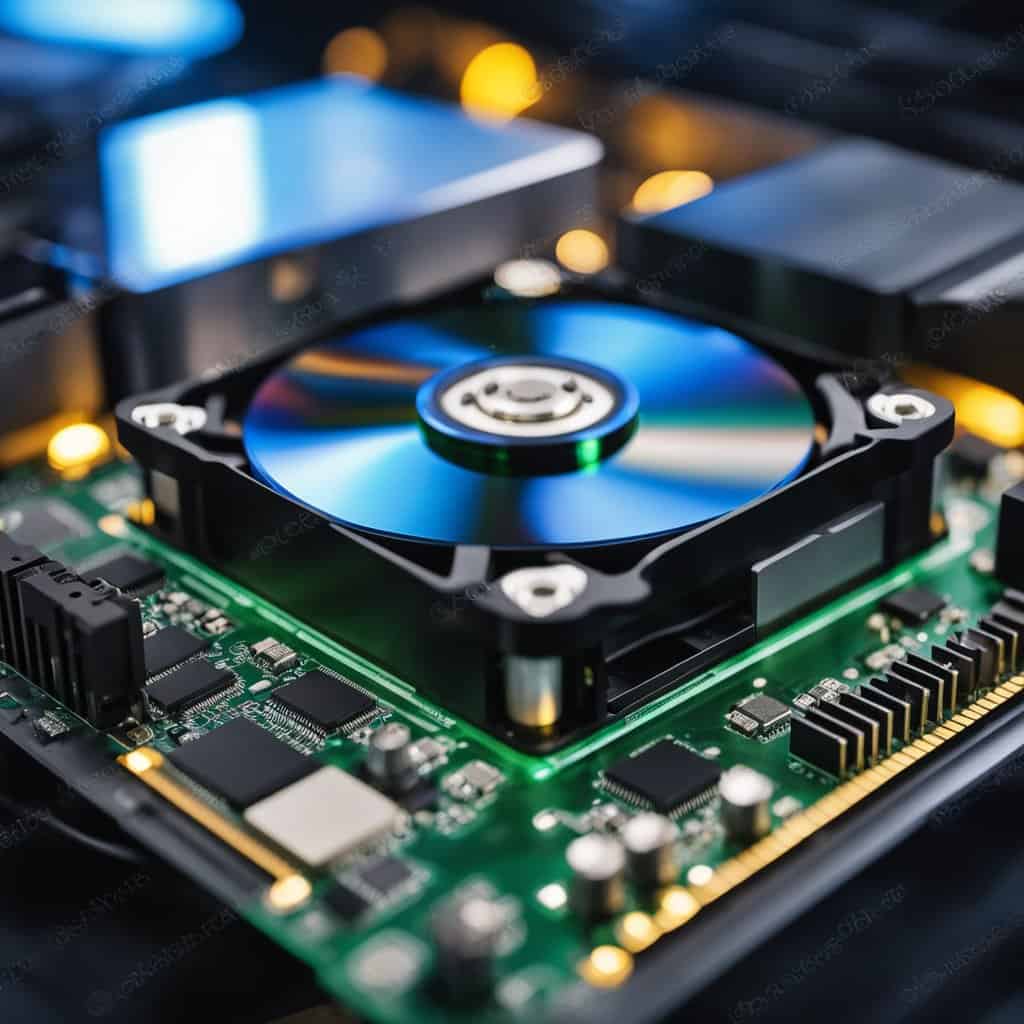When you upgrade to a new computer, the question of what to do with your old hard drive and its valuable data arises. Transferring your existing hard drive to your new setup seems like a cost-effective solution to retain your files and perhaps even the operating system you’re accustomed to.
However, moving a hard drive with an existing Windows installation to a new computer can be technically challenging due to potential booting issues.

The core of these issues stems from the way your old hard drive communicates with the new hardware. Every computer has a unique set of components and drivers, and your old operating system may not recognize or work with the new hardware without some tweaks.
This mismatch can prevent your new computer from booting properly or result in performance problems if it does not manage to start up.
To ensure a smooth transition, you need to prepare and understand the possible obstacles. It’s about addressing compatibility between your old hard drive and the new computer’s technology to avoid any interruptions in accessing your data and using your system effectively.
Whether it’s preserving your data storage or maintaining system stability, careful planning is essential for integrating an old hard drive into a new computer environment.
Preparing the Old Hard Drive
Before installing an old hard drive into a new computer, it’s crucial to ensure that the data is safe, the connections are compatible, and the drive is in good health to avoid any boot issues.
Data Backup and Transfer
Firstly, back up all important data from your old drive to prevent any loss. Use software like AOMEI Backupper to facilitate data cloning to an external drive or SSD. This step ensures that even if anything goes awry during the transition, your files remain intact and retrievable.
Determining Connection Type
Identify whether your old drive uses a SATA or an older connection type. Most newer motherboards support SATA, but you may need a USB drive enclosure if your new setup lacks compatibility or if you wish to use your old drive as an external one.
Hard Drive Health Assessment
Before the physical move, assess your old drive’s health using tools found in Disk Management. It’s vital to check for any signs of failure or corruption. If your drive is an SSD, confirm its condition using manufacturer-specific software to ensure it’s fit for continued use.
Installation and Configuration
When you migrate your old hard drive to a new computer system, understanding the right installation process and configuration settings is crucial to avoid boot issues and ensure your old data is accessible and functional.
Physical Installation
Begin by safely mounting your old hard drive into the new computer’s casing using a screwdriver to secure it with screws. If it’s a SATA drive, connect it to the motherboard with a SATA cable and plug in the power connector from the power supply.
For an NVMe drive, insert it directly into the motherboard’s M.2 slot, paying close attention to the SSD alignment, and secure it with the provided screw.
BIOS Setup and Boot Order
Power on your system and enter the BIOS setup by pressing the designated key during startup, which is often Delete, F2, or F10, depending on the motherboard manufacturer. Navigate to the boot menu to confirm or adjust the boot order, prioritizing your old hard drive if it’s intended to serve as the primary boot device.
Note that MBR (Master Boot Record) issues might arise if your old drive’s partition style doesn’t match your new system’s firmware type—ensure compatibility beforehand.
Driver Installation and Management
Once your system successfully boots, use Windows Device Manager to check for any driver conflict and ensure all necessary new drivers for your new computer’s components are installed.
It might require you to manually download and install the appropriate drivers for optimal performance. Additionally, if needed, you can edit partitions on your old hard drive to better organize your data and potentially resolve any discrepancies with the new system’s configuration.
Remember, correctly following these steps will help you set up your old hard drive in your new computer with minimal issues.
Operating System Considerations

When you move an old hard drive to a new computer, the operating system on that drive must align with the new hardware and licensing conditions. This section guides you through activating Windows, navigating upgrade paths, and the necessary steps should a reinstallation be required.
Handling Windows Activation
When transferring a hard drive to a new machine, Windows activation is a primary concern. Your operating system may require reactivation due to hardware changes, especially with OEM licenses which are tied to the original hardware.
To reactivate, you’ll need your original product key or digital entitlement. Reactivation can often be done directly within Windows or through a call to Microsoft’s customer service.
In some cases, if you have a retail license, transferring is more straightforward, however, an OEM license usually does not permit transfer to a new computer.
Upgrade Scenarios and Paths
A clean install may be the most efficient solution if your old hard drive has an outdated version of Windows, such as Windows 7, and you’re moving to a computer that’s more compatible with Windows 10 or Windows 11.
Upgrading the operating system before the move ensures that drivers and software are more likely to remain compatible. Remember, third-party software may have separate licensing and compatibility considerations.
Reinstallation and Universal Restore
If you encounter persistent boot issues after moving your hard drive to new hardware, a clean install of Windows may be necessary.
This process involves wiping your hard drive and reinstalling Windows from scratch, ensuring compatibility with your new system’s hardware. For a more seamless transition, you could opt for “Universal Restore” technology from third-party software that allows you to adapt your system’s drivers to the new hardware without the need for a full reinstallation.

